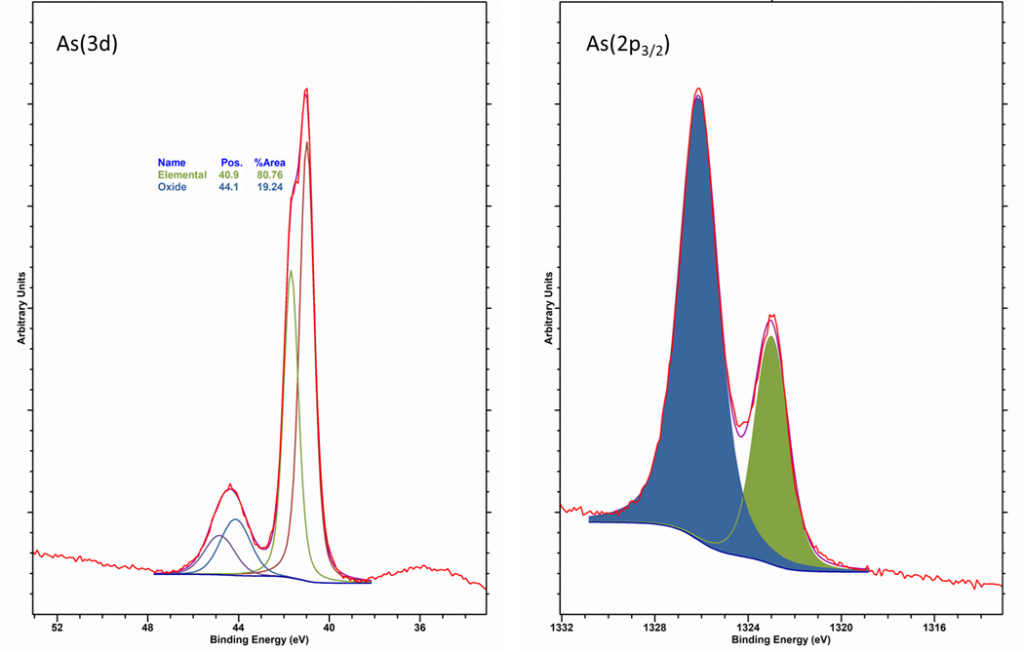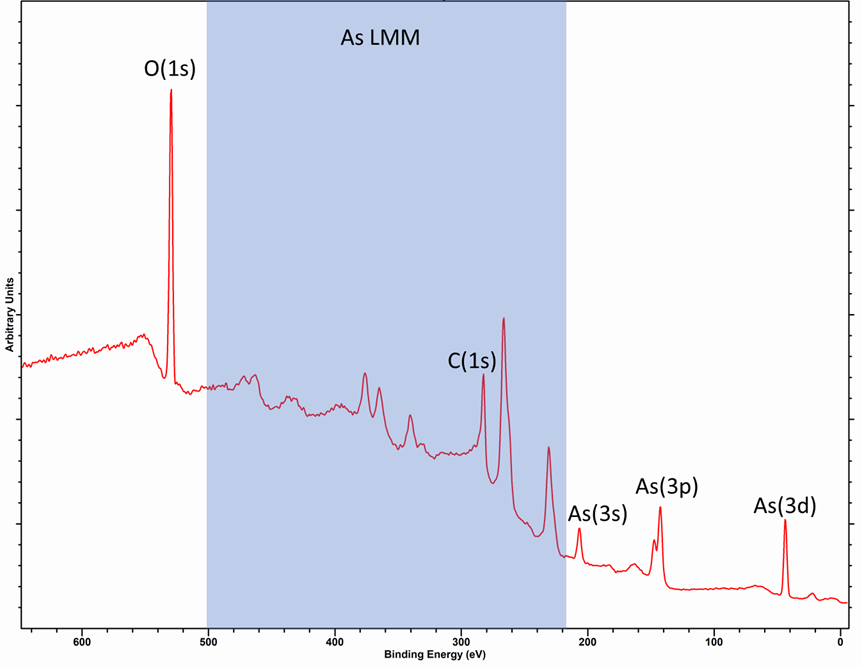- Elements
Arsenic
Arsenic is primarily analysed using the As(3d) region, which can overlap with the Ta(5p1/2) signal. Generally observed as an oxide or in GaAs, the As(3d) region has a spin-orbit splitting of 0.7 eV, with an intensity ratio of 0.7, as opposed to the expected 0.67.
Recording the As(2p3/2) region is useful also and demonstrates oxide thickness as a function of kinetic energy (see below)

The As LMM Auger peaks when recorded with a Al source encompass a wide energy range (500 – 250 eV) and therefore overlap with many other photoemission lines, so care should be taken in analysis. This can be seen in the spectra below of As2O5.

It has been reported that As2O3 sublimes in vacuum [1], whereas As5+ may under go some degredation by XPS analysis to yield As3+, so rapid analysis and/or summation of multi-point analysis may be required.
| As3d5/2 | Binding Energy / eV | Charge Ref. (if known) | Reference |
|---|---|---|---|
| As Metal | 41.5 | [2,3] | |
| GaAs | 40.9 | [3] | |
| As2O3 | 44.9 | C(1s) at 284.8 eV | [4] |
| As2O5 | 46.2 | C(1s) at 284.8 eV | [4] |
| NiAs | 41.1 | Au(4f) at 84.0 eV | [5] |
| As2p3/2 | Binding Energy / eV | Reference |
|---|---|---|
| As Metal | 1323.5 | [2,3] |
| GaAs | 1322.7 | [3] |
| As2O3 | 1326.7 | [4] |
| As2O5 | 1327.7 | [4] |
References
1. Arsenic entry at Thermo Scientific XPS Periodic Table
2. Arsenic entry at www.xpsfitting.com
3. Measured at HarwellXPS on Thermo Scientific K-Alpha+
4. Measured at HarwellXPS on Kratos Axis Ultra DLD system
5. H.W. Nesbitt and M. Reinke, American Mineralogist, 84 (1999) 629. Read online